#Famous Players-Lasky
Text
Lost, but Not Forgotten: Prodigal Daughters (1923)


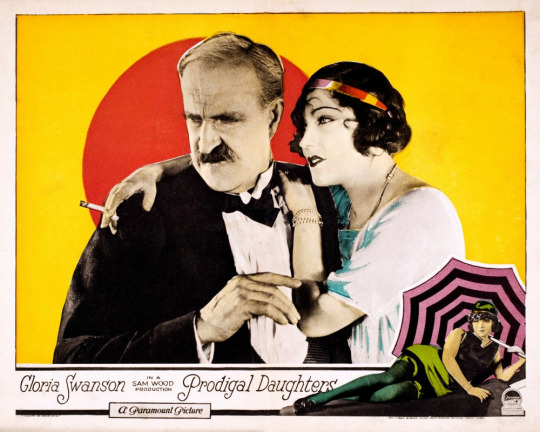


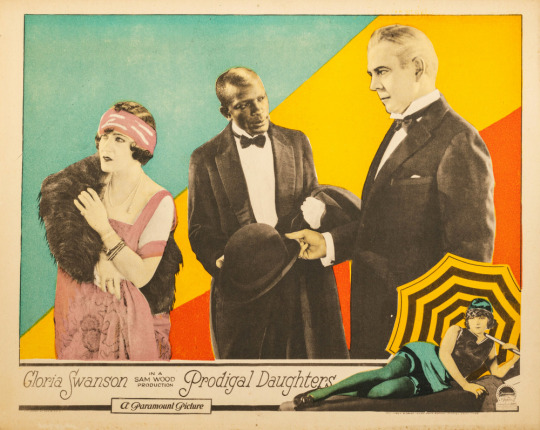
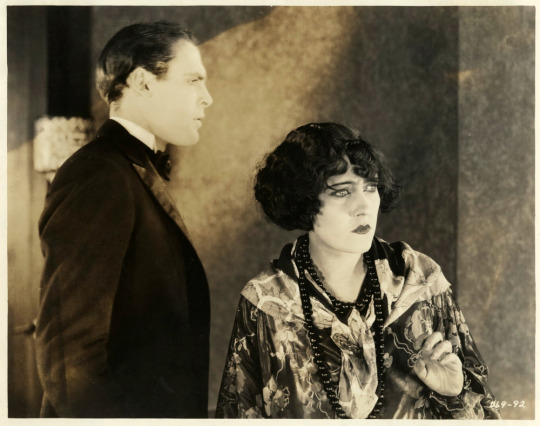
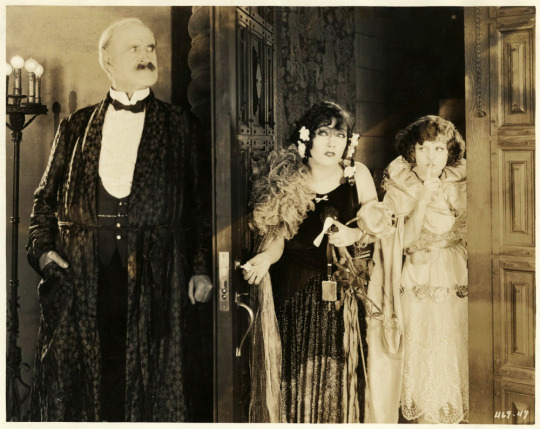


Direction: Sam Wood
Scenario: Monte M. Katterjohn
Original Novel: Joseph Hocking
Camera: Alfred Gilks
Studio: Paramount (production) & Famous Players-Lasky (distribution)
Performers: Gloria Swanson, Ralph Graves, Vera Reynolds, Theodore Roberts, Louise Dresser, Charles Clary, Robert Agnew, Maude Wayne, Jiquel Lanoe, George Fawcett, Eric Mayne
Flying Stunts: Leo Nomis
Premiere: 15 April 1923
Status: presumed entirely lost
Length: 6,216 feet, or roughly 70 minutes.*
Synopsis (synthesized from magazine summaries of the plot):
Elinor “Swiftie” Forbes (Gloria Swanson) and her sister Marjory (Vera Reynolds) are committed to living life on the “jazz route” at their comfy estate on Long Island. With their freshly bobbed hair, they attend the links on Sunday instead of church, party all night, smoke cigarettes, and drink. They live by the “Seven Deadly Whims:”

New Lips to Kiss.
Freedom from Conventions.
A New World for Women.
No More Chaperons.
Life with a Kick in It.
The Single Moral Standard.
Our Own Latchkeys.
Their mother (Louise Dresser) also thinks young and doesn’t try to restrict or discipline her daughters. The patriarch of the family is J.D. Forbes (Theodore Roberts), a locomotive magnate who became a millionaire off WWI. J.D. has been away on business in Europe for three years.
Back in New York around the Fourth of July, Stanley Garside (Charles Clary), who runs a gambling den, throws a party for Swiftie, which includes a firework display in her honor. On the radio, the crowd hears a lecture by a Doctor Marco Strong (Eric Mayne) decrying the moral degradation of the younger generation. Swiftie broadcasts her rebuttal from her own device.
Roger Corbin (Ralph Graves), an aviator who also happens to be an engineer at J.D.’s locomotive works, is flying nearby and hears Swiftie’s rebuttal. Corbin decides to make a landing at the party and invites Swiftie for a ride. She accepts, but bad weather forces them to land and they get waylaid overnight at a local inn. Swiftie’s friends pick her up in the morning and Corbin and Swiftie part without Swiftie knowing Corbin’s identity.
Meanwhile, Marjory is being pursued by songwriter Lester Hodges (Robert Agnew).
J.D. returns from Europe soon after with no one to meet him but his chauffeur. He’s horrified to see how the women in his family are living. They’ve even converted his billiard room into a dance parlor complete with buffet bar! J.D. bans smoking, drinking, parties, and Lester.
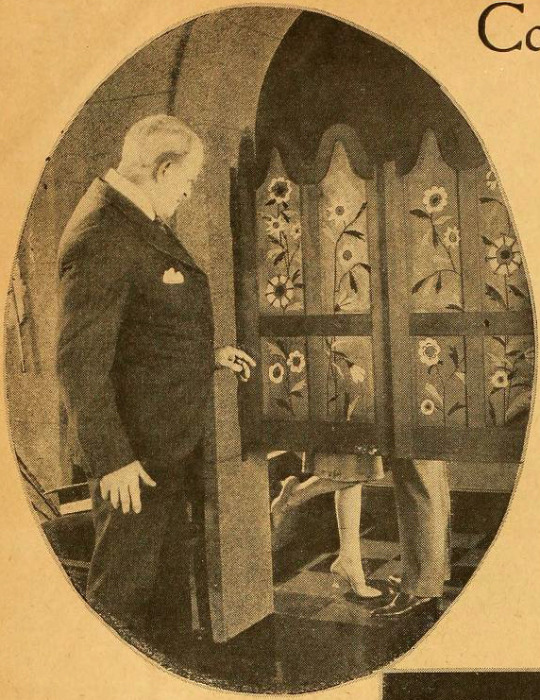
Theodore Roberts in Prodigal Daughters from Motion Picture Magazine, August 1923
Swiftie meets Corbin at her father’s house and learns he works for dad. Corbin proposes marriage to her, but she rejects him. The daughters rebel against their newly returned father and decide to make their own way in Greenwich Village.
Marjory marries Lester and Swiftie gets to earning a living on her own. Garside persues Swiftie and she takes to gambling at his establishment. Marjory finds out that Lester was only interested in her for her dad’s money and they split. Swiftie escorts Marjory back to their parents house, but vows to stick to her new independent lifestyle.
Unfortunately, Swiftie begins losing heavily at Garside’s. Garside agrees to a wager against Swiftie’s debt so that, if she loses again, he’ll clear her debt, but she has to marry him within 60 days. Swiftie loses.
On Christmas Eve, Swiftie and Garside are partying at a speakeasy when the joint gets raided by prohibition agents. Luckily for Swiftie, Corbin has been out looking for her and he finds her just in time to help her escape.
The climax features an accident with a newly designed locomotive and Swiftie and Garside in his automobile. Garside is killed, but Corbin is able to rescue Swiftie and they escape via airplane.
Swiftie and Corbin get together and she returns to her parent’s home, penitent.
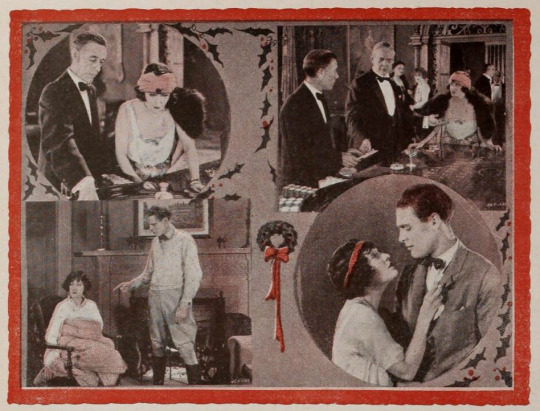
Scenes from Prodigal Daughters from Motion Picture News, 29 December 1923
Additional Info:
There is a sequence in the film that depicts the operation of a high-tech beauty parlor, wherein Louise Dresser’s character gets a face lift. It takes place before her husband returns from abroad, but I’m not certain with any more detail than that where it fits chronologically in the summary above.
There appears to be two sequences or at least two parts to the climatic sequence where Garside dies and Swiftie is rescued by Corbin. I’m not sure based on the summaries available precisely how they fit together, so I just described both instead of hypothesizing with no data.
---
Points of Interest:
This movie was Swanson’s 9th film out of a total of 10 with director Sam Wood.
The full list goes:
The Great Moment (1921, only a fragment survives at BFI),
Under the Lash (1921, presumed lost),
Don’t Tell Everything (1921, presumed lost),
Her Husband’s Trademark (1922, extant on 16mm at George Eastman House & Gosfilmofond),
Her Gilded Cage (1922, presumed lost),
Beyond the Rocks (1922, extant at Nederlands Filmmuseum, and available on home video via Milestone Films.),
The Impossible Mrs. Bellew (1922, presumed lost),
My American Wife (1922, presumed lost),
Prodigal Daughters (1923, presumed lost),
Bluebeard’s 8th Wife (1923, presumed lost)
That is only a 20 percent survival rate!
[Survival status checked via LOC’s Silent Feature Film Database, and re-checked at relevant archives when available]
If you happened to read my post profiling Racing Hearts (1923), you may remember that Theodore Roberts also plays a magnate who goes abroad to Europe and has a flapper daughter, with whom he doesn’t see eye to eye. These two films were released only two months apart, so I imagine it was pretty nice for Roberts to be able to take the “two birds, one stone” approach in preparing for his work. What a type to specialize in!
*The film was edited by censors in various state markets, so the runtime of a print in NY wouldn’t be identical to a print in Kansas.
☕ Buy me a coffee! ☕

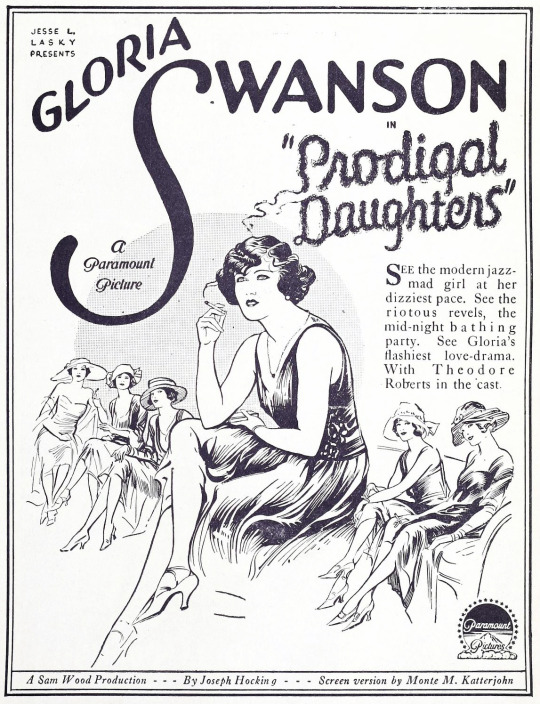
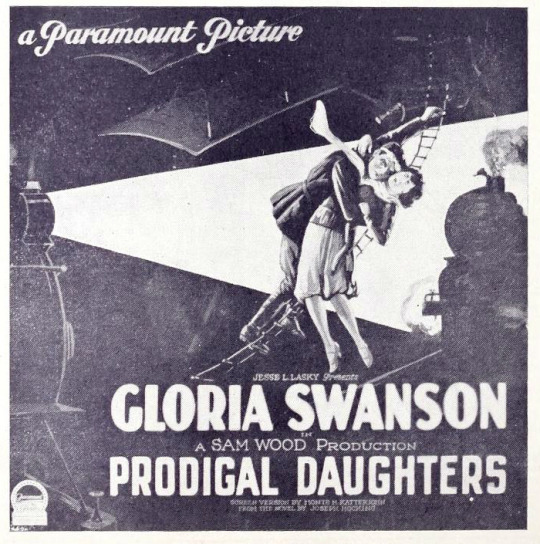
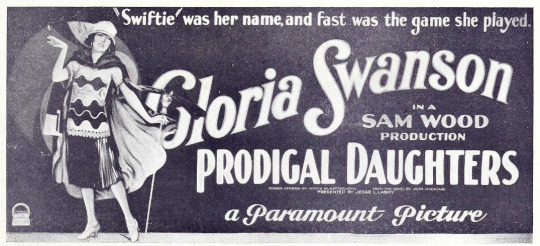



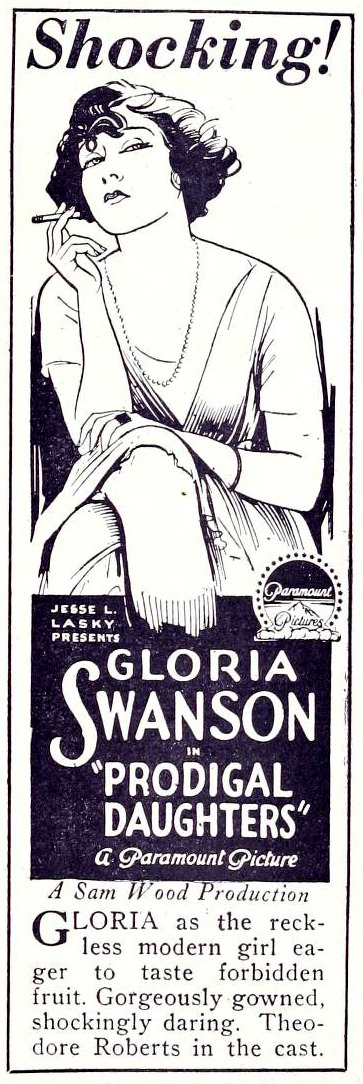
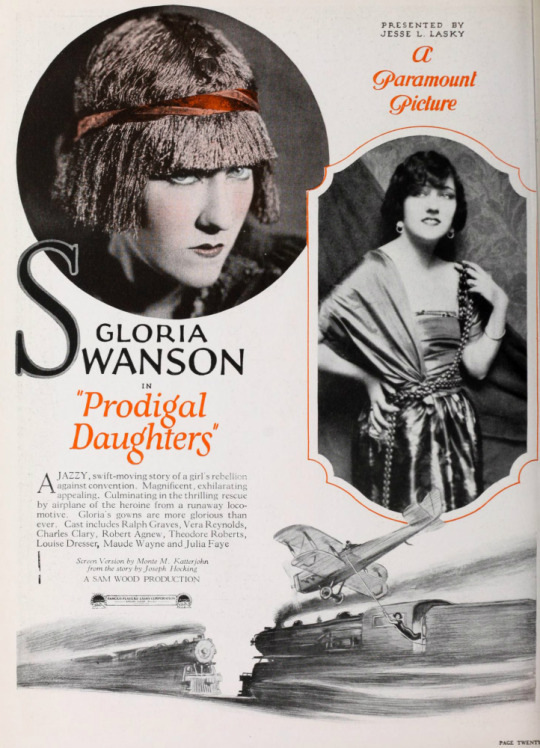


Transcribed Sources & Annotation over on the WMM Blog!
#1920s#1923#Gloria Swanson#Vera Reynolds#flappers#roaring twenties#silent movies#silent film#lost film#lost media#classic film#film history#classic movies#sam wood#american film#paramount#famous players-lasky#lost but not forgotten#film#movies
19 notes
·
View notes
Text

Famous Players- Lasky Stars of 1922
10 notes
·
View notes
Text
Paramount Pictures Studio - One of the world's oldest surviving film studio in Los Angeles
Paramount Pictures Studio – One of the world’s oldest surviving film studio in Los Angeles
The American film and television production and distribution company, dates its existence from the 1912 founding date of the Famous Players Film Company. Hungarian-born founder Adolph Zukor with partners, Daniel Frohman and Charles Frohman, he planned to offer feature-length films that would appeal to the middle class. Its first film was Les Amours de la reine Élisabeth, which starred Sarah…

View On WordPress
#Adolph Zukor#Cecil B. DeMille#Famous Players Film Company#Famous Players-Lasky#film#film production studio#Hobart Bosworth#Jesse L. Lasky#Lasky Feature Play Company#Paramount Pictures#William Wadsworth Hodkinson
0 notes
Text
THIS DAY IN GAY HISTORY
based on: The White Crane Institute's 'Gay Wisdom', Gay Birthdays, Gay For Today, Famous GLBT, glbt-Gay Encylopedia, Today in Gay History, Wikipedia, and more … January 3

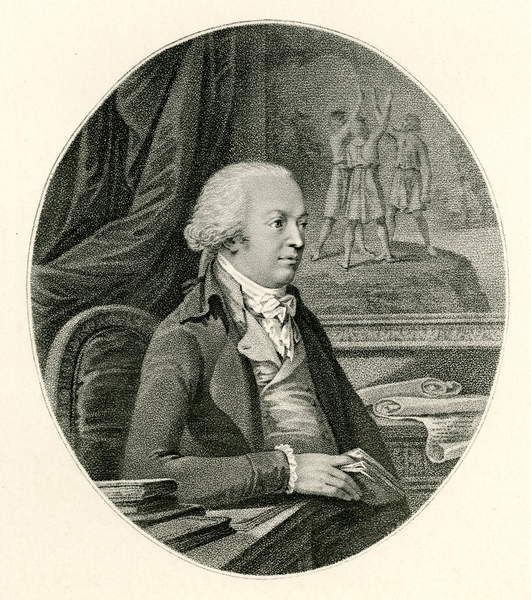
1752 – Johannes von Müller, Swiss historian, born (d.1809); Müller's Geschichten der Schweizer (Swiss History), a project that occupied most of his life and took him more than forty years to complete. Müller's tome (18 volumes in the French translation) is now considered hopelessly unreliable, even though in its day it stirred Swiss nationalism and had profound influence.
Müller's place here is due to his favorite extracurricular activity - writing love letters to Charles Victor de Bonstetten, a young, devastatingly handsome Swiss writer.
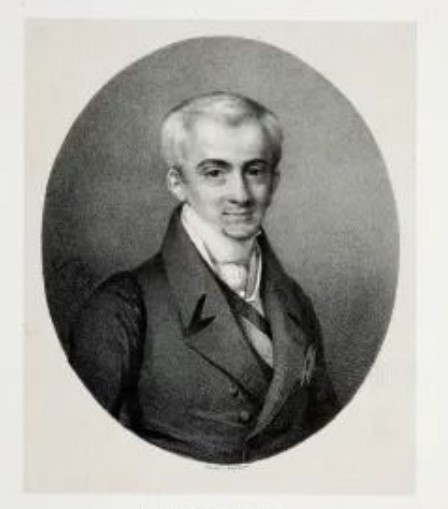
Charles Victor de Bonstetten
Bonstetten was also the object of desire for Thomas Gray, the English poet. Müller's love letters, among the loveliest ever penned, were published in 1835, twenty-five years after his death. Long before then, however, Goethe had gone on record declaring Müller's sexuality.


1900 – Dorothy Arzner (d.1979), although not the first woman to direct films in Hollywood, was the only woman director to work through the turbulent, richly productive, 1930s and 1940s—the period crucial to the development of Classical Hollywood Cinema.
Born in San Francisco, she grew up around the filmmakers and actors who frequented her father's Hollywood restaurant. After dropping out of university, where she had intended to become a doctor, Arzner interviewed with William DeMille (of the Famous Players-Lasky Corporation, i.e., Paramount Studios) and accepted her first film job as a script typist. She soon moved on to cutting and editing, eventually editing fifty-two pictures as chief editor for RealArt, a subsidiary of Paramount.
Arzner made her directorial debut at Paramount with Fashions for Women in 1927. Between 1927 and 1933, she directed eleven films for Paramount; in the ten years between 1933 and when she left the Hollywood film industry in 1943, Arzner directed another six films as a freelancer with RKO, United Artists, MGM, and Columbia.
During this time, Arzner received media attention as a "woman director" in the popular press; and as a woman, her work and her career were constantly scrutinized. For all this, however, Arzner remained enigmatic, even provocatively so: observers commented on the juxtaposition of her petite figure and her "mannish" dress; journalists reassured readers that this woman gave her orders on the set with a soft and "feminine" voice; and publicity photos regularly romanced her relationship with her female stars, who included such actresses as Clara Bow, Claudette Colbert, Rosalind Russell, Katherine Hepburn, and Joan Crawford.
Arzner's lesbianism seems to have been well-known within the Hollywood community, though little attention was paid to it publicly. She lived openly with her companion Marion Morgan, a choreographer and dancer, from 1930 until Morgan's death in 1971. The prominence of dance in several of Arzner's films may reflect Morgan's influence.
Arzner left Hollywood in 1943 to recover from an illness, and she never returned. Coincidentally, post-World War II Hollywood experienced a radical movement towards conservative "family values" quite incompatible with Arzner's general themes and interests, and her work seems to have fallen out of favor.
After her Hollywood career, Arzner directed training films for the Women's Army Corps, taught in the film program at UCLA (1959-1963), and was honored by the Director's Guild of America in 1975. She died on October 1, 1979.
As a woman "pioneer" in the film industry, and as a lesbian, Arzner has attracted considerable attention recently. She has been recognized for her innovations in using sound and her films, though many are still hard to find outside of archives, have seen a renewed interest both academically and popularly.


1948 - Sex Researcher Alfred Kinsey revealed a high incidence of same-sex acts among men. Behavior in the Human Male is published, in which the researcher concludes that 37% of American males have had at least one gay sexual experience to the point of orgasm. Five years later Kinsey publishes his report on women, which puts the comparable figure at 13%.


1964 – Bruce LaBruce is a Canadian writer, filmmaker, photographer and underground gay porn director based in Toronto, Ontario.
LaBruce was born Bryan Bruce in Tiverton, Ontario, and wrote for Cineaction magazine, curated by Robin Wood, his teacher. He first gained public attention with the publication of the queer punk zine J.D.s, which he co-edited with G.B. Jones. He currently writes and photographs for a variety of publications including Vice, Nerve.com and BlackBook magazine, and has made a number of films which merged the artistic techniques of independent film with gay pornography.
He has also previously been a columnist for the Canadian music magazine Exclaim! and Toronto's eye weekly, and he was a contributing editor and photographer for many years at New York's index magazine. He has also been published in Toronto Life and the National Post as well as the UK Guardian. His movie, Otto, or, Up With Dead People debuted at the 2008 Sundance Film Festival. L.A. Zombie was banned from the Melbourne International Film Festival in 2010 because, in the opinion of Australian censors, it would have been refused classification. However, the film was subsequently able to screen at OutTakes, a New Zealand lesbian and gay international film festival, in May 2011.
In March 2011, LaBruce directed a performance of Arnold Schoenberg's opera Pierrot Lunaire at the Hebbel am Ufer Theatre in Berlin. As one no doubt assumes, this iteration of the opera included gender diversity, castration scenes and dildos, as well as a female to male transgender Pierrot.


10 notes
·
View notes
Text
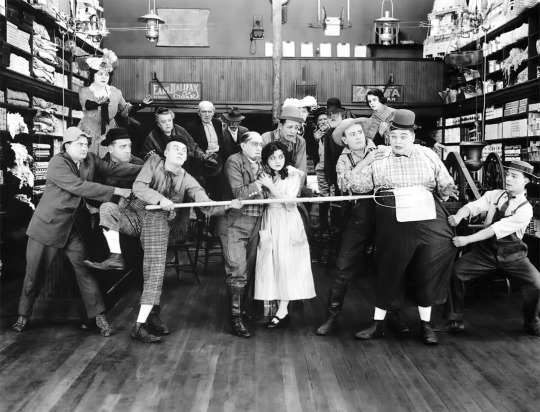
𝑻𝒉𝒆 𝑩𝒖𝒕𝒄𝒉𝒆𝒓 𝑩𝒐𝒚 Famous Players-Lasky, 1917. Directed by Roscoe "Fatty" Arbuckle. Camera: Frank D. Williams. With Roscoe "Fatty" Arbuckle, Buster Keaton, Al St. John, Josephine Stevens, Arthur Earle, Joe Bordeaux, Charles Dudley, Alice Lake, Agnes Neilson.
11 notes
·
View notes
Text
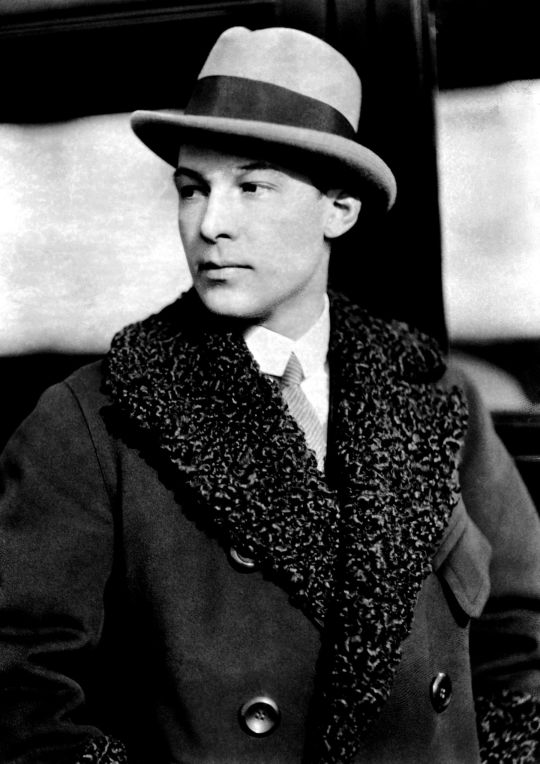

Famous Players-Lasky Corporation thought they owned Rudolph Valentino, and I really don't think this company expected him to be this smart with business. In 1922, he went on strike against them after 1) receiving shitty treatment while filming Blood and Sand, which was filmed in his homeland of Spain 2) he discovered he was paid LESS than Mary Pickford was four years earlier, in 1916. Which even for the time is shit because given the athletic stunts he did in his films like Blood and Sand and The Sheik? I've seen her films and she did a couple physical stunts but not up to what Rudolph did. There were women in silent film who could match him, such as Clara Bow and Louise Brooks, but Mary Pickford never did. So for Valentino to be paid less than her is crap.
So the Spanish actor walked out on his contract, papers of the time spin it like Rudolph was banned from movie making until he accepted the salary given him by the studio, and as we all know going on strike nearly destroyed his career. After doing a deep dive on this subject it turns out that studio was in a bind. They needed Valentino, in fact they were dependent on him after the sudden murder of director William Desmond Taylor, and the Roscoe Arbuckle trial. While the media continued to demonize Valentino for months, the studio had no choice and gave in. Newspapers of the time again state that the studio let Valentino come back to work, but the truth is that studio never had control of him if he was able to take a stand like that.
10 notes
·
View notes
Text
Mary Astor - The Cameo Girl

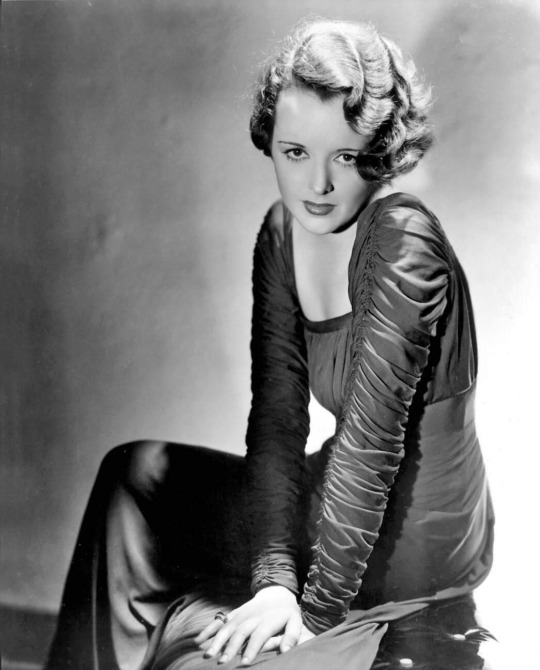


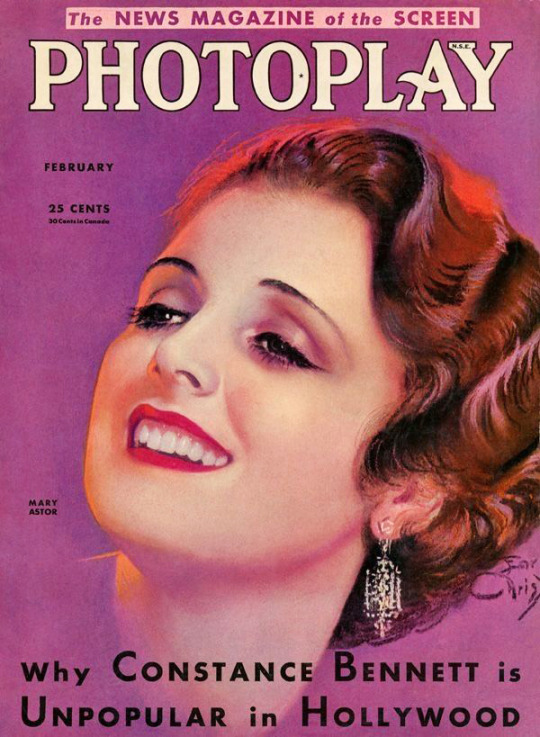
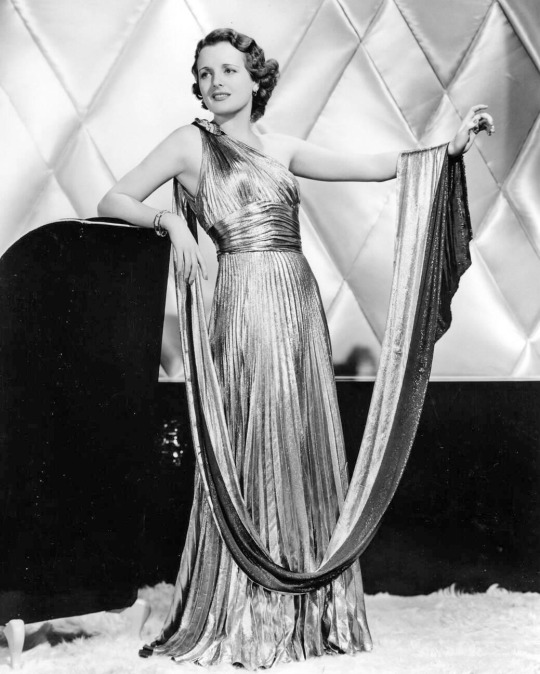
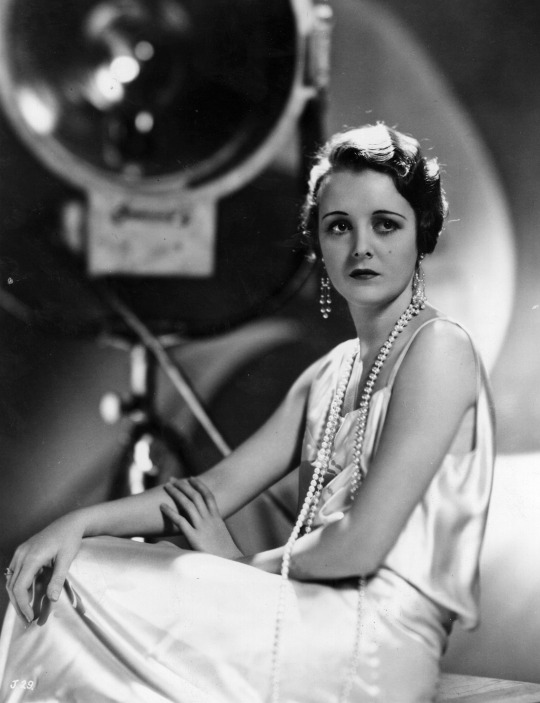




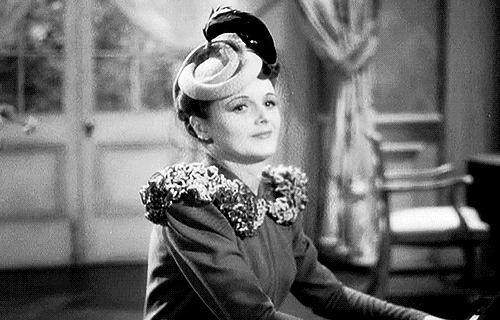
Mary Astor (born Lucile Vasconcellos Langhanke in Quincy, Illinois on May 3, 1906 – September 25, 1987) was an American actress of German and Portuguese ethnicity. Noted for her classic beauty and a renowned profile that earned her the nickname “The Cameo Girl.”
Recognizing her beauty, her parents pushed her into various beauty contests. Luck arrived when she became a runner-up in one of Motion Picture Magazine's photography contests and came to the attention of Harry Durant of Famous Players–Lasky, who signed her when she was 14.
Astor was a contract player first with Paramount, then Warner Bros., and finally Metro-Goldwyn-Mayer and worked in film, television, and on stage until her retirement in 1964. She also had a respectable career as a writer. Her 1959 autobiography Mary Astor: My Story was one of the first confessional autobiographies to come out of Hollywood.
Although her career spanned over four decades, she is best remembered for her performance as Brigid O'Shaughnessy in The Maltese Falcon (1941) and concert pianist Sandra Kovak in The Great Lie (1941).
After here retirement in 1964, Astor lived the final years of her life as a resident of the Motion Picture Country House in Woodland Hills, Los Angeles where she succumbed to the effects of respiratory failure due to pulmonary emphysema at the age of 81.
Legacy:
Chosen as one of the WAMPAS Baby Stars in 1926
Won the Academy Award for Best Supporting Actress in 1941
Authored two best-selling books of memoirs, Mary Astor: My Story (1959) and A Life on Film (1971) as well as five fictional novels.
Has had a star on the Hollywood Walk of Fame at 6701 Hollywood Boulevard since 1960.

#Mary Astor#The Cameo Girl#The Maltese Falcon#Silent Films#Silent Movies#Silent Era#Silent Film Stars#Golden Age of Hollywood#Classic Hollywood#Film Classics#Classic Films#Old Hollywood#Vintage Hollywood#Hollywood#Movie Star#Hollywood Walk of Fame#Walk of Fame#Movie Legends#Actress#hollywood actresses#hollywood icons#hollywood legend#movie stars#1900s
2 notes
·
View notes
Text
Thoughts on Monsieur Beaucaire (1924)

I told myself I wouldn't watch Monsieur Beaucaire until it was in a restored version that did Natacha Rambova's gorgeous costumes justice, but... I didn't lol.
The film is set in 18th century France and England, and follows the adventures of the Duke of Chartres (Rudolph Valentino) as he gets into swordfights and pretends to be of humble means so he can find a woman who loves him for himself and not his title.
For those unaware, Monsieur Beaucaire has a dour reputation, much of it related to Natacha Rambova'a alleged chokehold over the production and her husband Rudolph Valentino, the star of the film. She was accused of meddling on the set (actress Doris Kenyon remembers her giving Valentino silent direction via gesture on the sidelines while cameras rolled) and making Valentino's screen image overly "effeminate," dressing him in lacy rococo fashions and powdered wigs. Famous Players head Jesse Lasky complained the studio could only get Valentino on Natacha's terms or no dice. Ken Russell's Valentino biopic exaggerates this notion further, featuring a scene in which Rambova is shouting direction to Valentino and his leading lady over the director while filming.
As always, this "wicked woman, poor dope husband" narrative undermines Valentino's respect for his wife as an artist and his own agency in choosing material. Valentino detested the lusty sheik role that made him famous and longed to appear in more artistic productions. Monsieur Beaucaire was a light comedy that featured a bit of swashbuckling-- all things that would allow Valentino to show off his comic chops and athleticism. I doubt he was unduly swayed by his wife in choosing this script-- he probably saw this as an ideal vehicle to show another side of his skill.
I'm not going to argue Beaucaire is a lost classic. It's let down by some truly underwhelming direction from Sidney Olcott. The material cries for a far lighter touch, but the mood is crushed underneath bland direction and a mountain of wordy title cards and endless supporting characters who leave no impression. Clocking in at 105 minutes, some streamlining would not have hurt.
Two things stand out: Valentino's performance and Ramobva's gorgeous costumes. I've always loved Valentino's comedic abilities-- the guy could be very funny and I really wish he'd gotten to appear in a Lubitsch film. Valentino was also humble enough to kid his own screen image as a torrid lover, which you can get glimmers of here.
And then those costumes-- my God, they are divine!
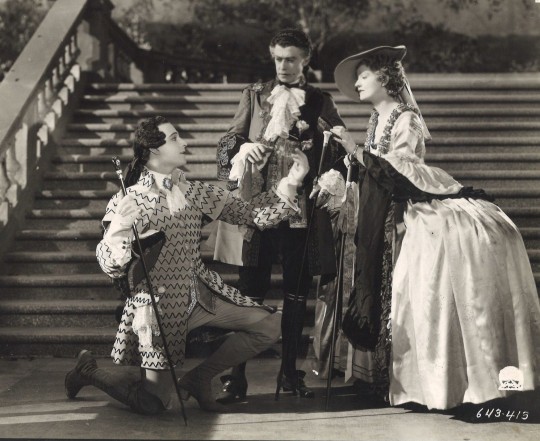

Monsieur Beaucaire was a hit in big cities, but floundered in smaller venues. Fans seem to have been divided in the final product. Some found Valentino graceful and delightful, while others longed for a return to more passionate, menacing roles. It's not a film I would recommend for silent film novices, but if you like Valentino, you'll likely be charmed by his performance.
2 notes
·
View notes
Text


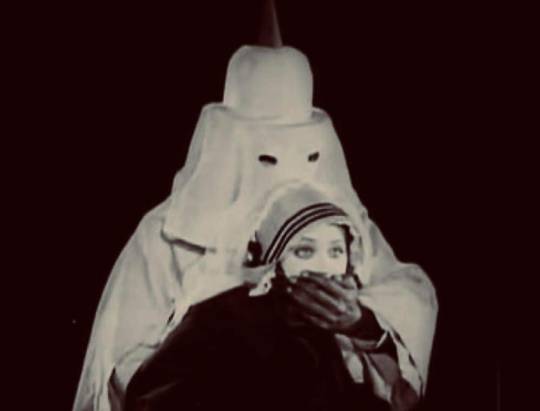
A scene from the 1917 film A MORMON MAID, a bizarre film set in the 1840s against the backdrop of Mormon expansion into the West, particularly Utah. Pictured here, members of "the Avenging Angels, a band of masked Mormon militiamen" (as described at Turner Classic Movies’ website) take the main character Dora, played here by Mae Murray, hostage so that she can be married off to conniving Mormon polygamist Elder Darius Burr. (TCM’s synopsis of A MORMON MAID is here: https://www.tcm.com/tcmdb/title/497120/a-mormon-maid#synopsis )
Interestingly, there was a brief fad of anti-Mormon scare films in the late 1910s and 1920s that included A MORMON MAID and the better-known TRAPPED BY THE MORMONS from 1922. A current Mormon website claims, "Though largely unknown today, A MORMON MAID is arguably the most potent and important anti-Mormon film in the history of cinema. Produced under director general Cecil B. DeMille at Famous Players-Lasky ... it was, to all appearances, designed to benefit from the success of D.W. Griffith's landmark THE BIRTH OF A NATION from two years earlier. Not only was it handled and marketed in this way, but the film's content itself made explicit references to the Ku Klux Klan by linking them with the Mormon Danites." The film remains an interesting historical curiosity of the short-lived "Mormonspolitation" subgenre in early cinema. (Silent and Pre-Code Horror)
.
.
#silentandprecodehorror #amormonmaid #maemurray #trappedbythemormons #mormons #silenthorror #birthofanation #mormonspolitation
2 notes
·
View notes
Text

I have compiled all the free movies I could find that are 1990's and older all easy to watch in my youtube playlist, Enjoy!




Frankenstein is a 1910 American shortsilenthorror film produced by Edison Studios. Directed by J. Searle Dawley, This short motion picture is generally recognized by film historians as the first screen adaptation of Shelley's work. (CW/Attempted murder/Child death/Death/Depression/Islamophobia/Murder/Parental abandonment/Xenophobia)
Dr. Jekyll and Mr. Hyde is a 1912horror film based on both Robert Louis Stevenson's novella Strange Case of Dr Jekyll and Mr Hyde (1886) and on the 1887 play version written by Thomas Russell Sullivan. Directed by Lucius Henderson. (CW/Death/Murder/Suicide/Violence)
Nosferatu: A Symphony of Horror is a 1922 silentGerman Expressionisthorror film directed by F. W. Murnau. (CW/Sex & Nudity/Violence & Gore/Profanity/Alcohol/Drugs & Smoking/Frightening & Intense Scenes)



Dr. Jekyll and Mr. Hyde is a 1920 American silenthorror film produced by Famous Players-Lasky and was directed by John S. Robertson. (CW/violence/profanity)
The Hunchback of Notre Dame is a 1923 American drama film starring Lon Chaney, directed by Wallace Worsley, and produced by Carl Laemmle and Irving Thalberg. (CW/Sex & Nudity/Violence & Gore/Profanity/Frightening & Intense Scenes)
The Phantom of the Opera is a 1925 American silenthorror filmadaptation of Gaston Leroux's 1910 novel Le Fantôme de l'Opéra, directed by Rupert Julian and starring Lon Chaney. (CW/Sex & Nudity/Violence & Gore/Profanity/Alcohol, Drugs & Smoking/Frightening & Intense Scenes.)
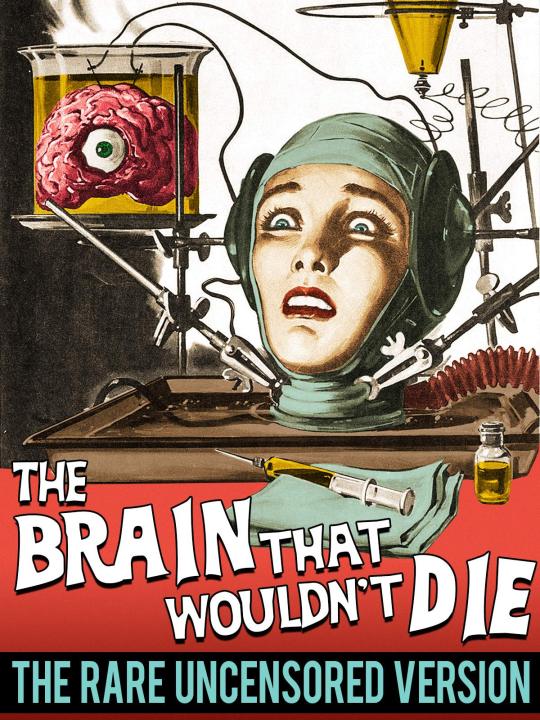


The Brain That Wouldn't Die (also known as The Head That Wouldn't Die or The Brain That Couldn't Die) is a 1962 American science fictionhorror film directed by Joseph Green. (CW/Sex & Nudity/Violence & Gore/Profanity/Alcohol, Drugs & Smoking/Frightening & Intense Scenes)
The Last Man on Earth is a 1964 post-apocalyptic science fiction horror film based on the 1954 novel I Am Legend by Richard Matheson. The film was produced by Robert L. Lippert and directed by Ubaldo Ragona and Sidney Salkow, and stars Vincent Price.(CW/Violence & Gore/Profanity/Alcohol, Drugs & Smoking/Frightening & Intense Scenes)
Night of the Living Dead is a 1968 American independent horror film directed, photographed, and edited by George A. Romero. (CW/Sex & Nudity/Violence & Gore/Profanity/Alcohol, Drugs & Smoking/Frightening & Intense Scenes)
More movies to be added later on, if you have any requests or know of any public domain works you want me to add just ask.
5 notes
·
View notes
Text
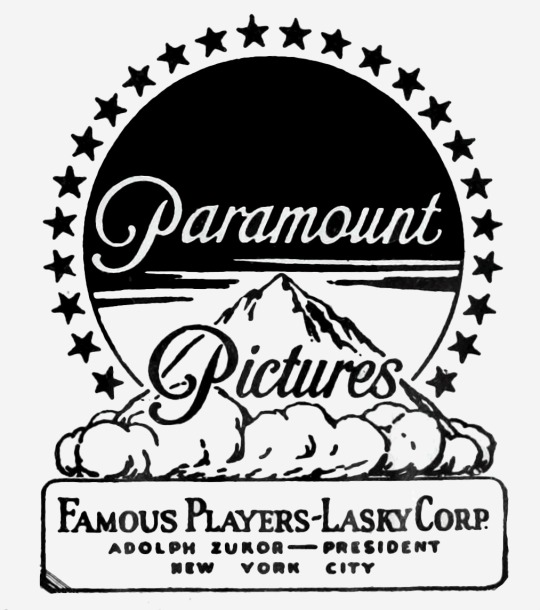
Paramount Famous Players-Lasky Corp., 1926.
8 notes
·
View notes
Text
How’d They Do That?
Special Effects & Stunts of Silent Cinema - Part 1
This is the first installment of an open-ended series where I try to highlight and illustrate the work of special effects and stunt artists of silent filmdom. Using articles from contemporary fan and trade magazines, I’ll make gifs or dig up images and/or video clips to accompany the descriptions of how the sequences were executed.
My notations will be bracketed and highlighted in a different color. Hope you all enjoy! Fair warning: this is a long read.
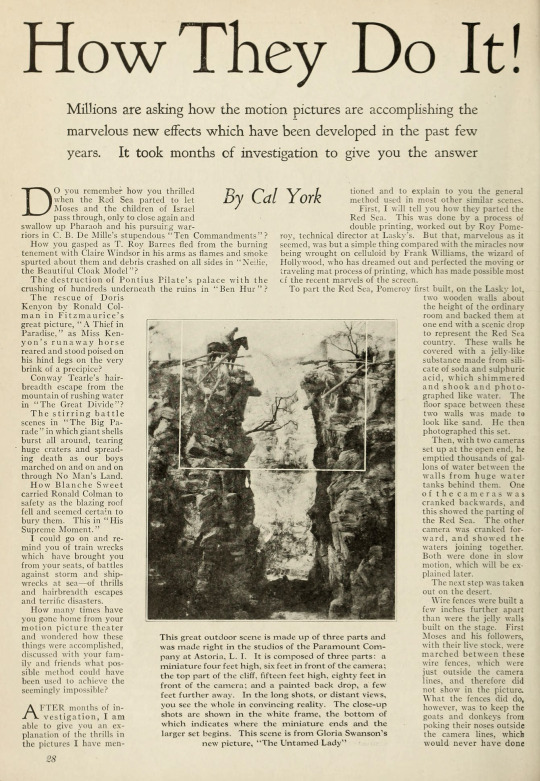
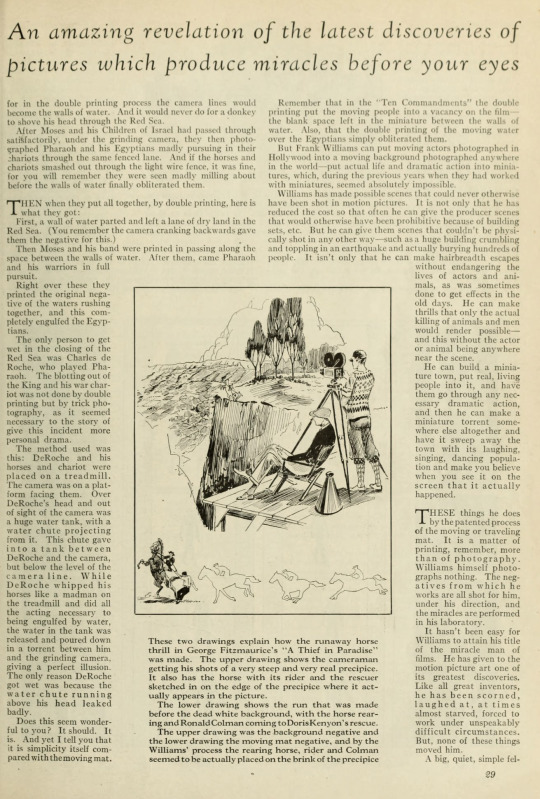
How They Do It!
[from Photoplay, April 1926]
by Cal York
Millions are asking how the motion pictures are accomplishing the marvelous new effects which have been developed in the past few years. It took months of investigation to give you the answer
DO you remember how you thrilled when the Red Sea parted to let Moses and the children of Israel pass through, only to close again and swallow up Pharaoh and his pursuing warriors in C.B. De Mille's stupendous "Ten Commandments" ?
How you gasped as T. Roy Barnes fled from the burning tenement with Claire Windsor in his arms as flames and smoke spurted about them and debris crashed on all sides in "Nellie, the Beautiful Cloak Model"?
The destruction of Pontius Pilate's palace with the crushing of hundreds underneath the ruins in "Ben Hur"?
The rescue of Doris Kenyon by Ronald Colman in Fitzmaurice's great picture, "A Thief in Paradise," as Miss Kenyon's runaway horse reared and stood poised on his hind legs on the very brink of a precipice?
Conway Tearle's hair-breadth escape from the mountain of rushing water in "The Great Divide"?
The stirring battle scenes in "The Big Parade" in which giant shells burst all around, tearing huge craters and spreading death as our boys marched on and on and on through No Man's Land.
How Blanche Sweet carried Ronald Colman to safety as the blazing roof fell and seemed certain to bury them. This in "His Supreme Moment."
I could go on and remind you of train wrecks which have brought you from your seats, of battles against storm and shipwrecks at sea—of thrills and hairbreadth escapes and terrific disasters.
How many times have you gone home from your motion picture theater and wondered how these things were accomplished, discussed with your family and friends what possible method could have been used to achieve the seemingly impossible?
AFTER months of investigation, I am able to give you an explanation of the thrills in the pictures I have mentioned and to explain to you the general method used in most other similar scenes.
First, I will tell you how they parted the Red Sea. This was done by a process of double printing, worked out by Roy Pomeroy, technical director at Lasky's. But that, marvelous as it seemed, was but a simple thing compared with the miracles now being wrought on celluloid by Frank Williams, the wizard of Hollywood, who has dreamed out and perfected the moving or traveling mat process of printing, which has made possible most of the recent marvels of the screen.
[Roy Pomeroy was head technical wizard for Famous Players-Lasky/Paramount (that is to say, he was their head special-effects engineer). We only know for certain about a handful of films that Pomeroy made specific contributions to, like The Ten Commandments (1923) and Wings (1927). As with many journeymen of the silent/studio era of Hollywood, the amount of films Pomeroy worked on was likely substantial, but many technical roles went uncredited at the time.]
To part the Red Sea, Pomeroy first built, on the Lasky lot, two wooden walls about the height of the ordinary room and backed them at one end with a scenic drop to represent the Red Sea country. These walls he covered with a jelly-like substance made from silicate of soda and sulphuric acid, which shimmered and shook and photographed like water. The floor space between these two walls was made to look like sand. He then photographed this set.

Then, with two cameras set up at the open end, he emptied thousands of gallons of water between the walls from huge water tanks behind them. One of the cameras was cranked backwards, and this showed the parting of the Red Sea. The other camera was cranked forward, and showed the waters joining together. Both were done in slow motion, which will be explained later.

The next step was taken out on the desert.
Wire fences were built a few inches further apart than were the jelly walls built on the stage. First Moses and his followers, with their live stock, were marched between these wire fences, which were just outside the camera lines, and therefore did not show in the picture. What the fences did do, however, was to keep the goats and donkeys from poking their noses outside the camera lines, which would never have done for in the double printing process the camera lines would become the walls of water. And it would never do for a donkey to shove his head through the Red Sea.
After Moses and his Children of Israel had passed through satisfactorily, under the grinding camera, they then photographed Pharaoh and his Egyptians madly pursuing in their chariots through the same fenced lane. And if the horses and chariots smashed out through the light wire fence, it was fine. for you will remember they were seen madly milling about before the walls of water finally obliterated them.
THEN when they put all together, by double printing, here is what they got:
First, a wall of water parted and left a lane of dry land in the Red Sea. (You remember the camera cranking backwards gave them the negative for this.)
Then Moses and his band were printed in passing along the space between the walls of water. After them, came Pharaoh and his warriors in full pursuit.
Right over these they printed the original negative of the waters rushing together, and this completely engulfed The Egyptians.

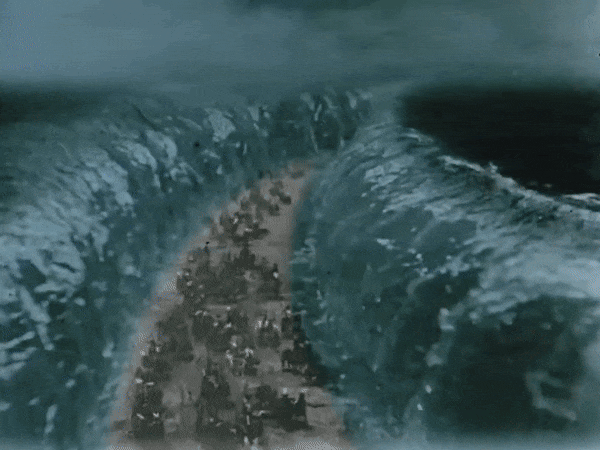
The only person to get wet in the closing of the Red Sea was Charles de Roche, who played Pharaoh. The blotting out of the King and his war chariot was not done by double printing but by trick photography, as it seemed necessary to the story of give this incident more personal drama.

The method used was this: DeRoche and his horses and chariot were placed on a treadmill. The camera was on a platform facing them. Over DeRoche's head and out of sight of the camera was a huge water tank, with a water chute projecting from it. This chute gave into a tank between DeRoche and the camera, but below the level of the camera line. While DeRoche whipped his horses like a madman on the treadmill and did all the acting necessary to being engulfed by water, the water in the tank was released and poured down in a torrent between him and the grinding camera, giving a perfect illusion. The only reason DeRoche got wet was because the water chute running above his head leaked badly.
Does this seem wonderful to you? It should. It is. And yet I tell you that it is simplicity itself compared with the moving mat.
Remember that in the "Ten Commandments" the double printing put the moving people into a vacancy on the film—the blank space left in the miniature between the walls of water. Also, that the double printing of the moving water over the Egyptians simply obliterated them.
READ ON BELOW the JUMP!
---
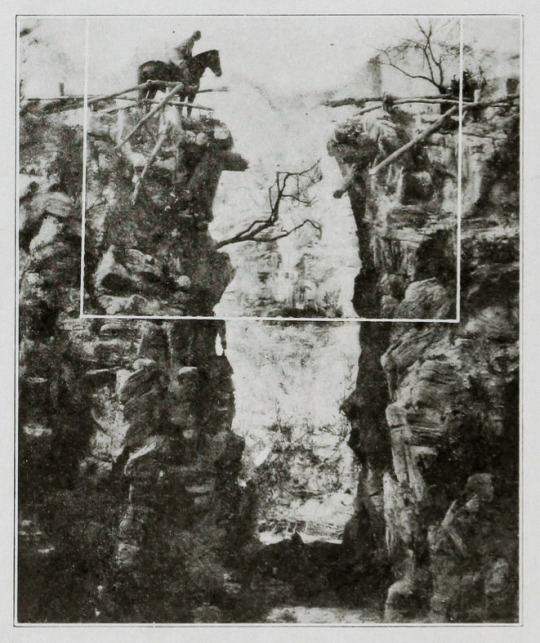
Photo caption: This great outdoor scene is made up of three parts and was made right in the studios of the Paramount Company at Astoria, L.I. It is composed of three parts: a miniature four feet high, six feet in front of the camera; the top part of the cliff, fifteen feet high, eighty feet in front of the camera; and a painted back drop, a few feet further away. In the long shots, or distant views, you see the whole in convincing reality. The close-up shots are shown in the white frame, the bottom of which indicates where the miniature ends and the larger set begins. This scene is from Gloria Swanson's new picture, "The Untamed Lady"
[The Untamed Lady (1926) is presumed lost, but luckily, a few images of this cliff-top sequence have survived.
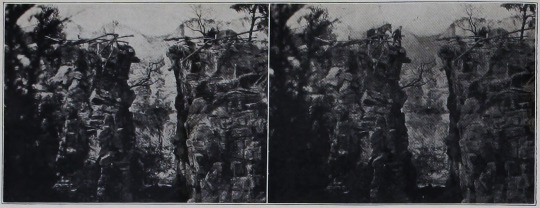

from Exhibitors Herald, 20 March 1926]
An amazing revelation of the latest discoveries of pictures which produce miracles before your eyes
---
But Frank Williams can put moving actors photographed in Hollywood into a moving background photographed anywhere in the world—put actual life and dramatic action into miniatures, which, during the previous years when they had worked with miniatures, seemed absolutely impossible.
[As you can gather from this article Frank Williams was a pioneer cinematographer and special effects artist. Williams was able to patent his moving matte process (and named it the Williams process) and it was an important effects technique used in film as as varied as Ben-Hur (1925), Sunrise: A Song of Two Humans (1926), The Lost World (1925), and The Invisible Man (1933). All of which are extant and easily accessible!
While it wasn’t in regular use for very long, the process was the basis for significant later developments in special effects photography, like green screening!]
Williams has made possible scenes that could never otherwise have been shot in motion pictures. It is not only that he has reduced the cost so that often he can give the producer scenes that would otherwise have been prohibitive because of building sets, etc. But he can give them scenes that couldn't be physically shot in any other way—such as a huge building crumbling and toppling in an earthquake and actually burying hundreds of people. It isn't only that he can make hairbreadth escapes without endangering the lives of actors and animals, as was sometimes done to get effects in the old days. He can make thrills that only the actual killing of animals and men would render possible—and this without the actor or animal being anywhere near the scene.
He can build a miniature town, put real, living people into it, and have them go through any necessary dramatic action, and then he can make a miniature torrent somewhere else altogether and have it sweep away the town with its laughing, singing, dancing population and make you believe when you see it on the screen that it actually happened.
THESE things he does by the patented process of the moving or traveling mat. It is a matter of printing, remember, more than of photography. Williams himself photographs nothing. The negatives from which he works are all shot for him, under his direction, and the miracles are performed in his laboratory.
It hasn't been easy for Williams to attain his title of the miracle man of films. He has given to the motion picture art one of its greatest discoveries. Like all great inventors, he has been scorned, laughed at, at times almost starved, forced to work under unspeakably difficult circumstances. But, none of these things moved him.
A big, quiet, simple fellow, only thirty-two years old. Shy, rather diffident of speech, he makes everything he does look easy. When he comes on a set, his quiet presence is scarcely noticed, and cameramen and technical experts go on spluttering and arguing, and when he is finally appealed to, he settles the problem so simply that everyone wonders why he didn't think of it himself.
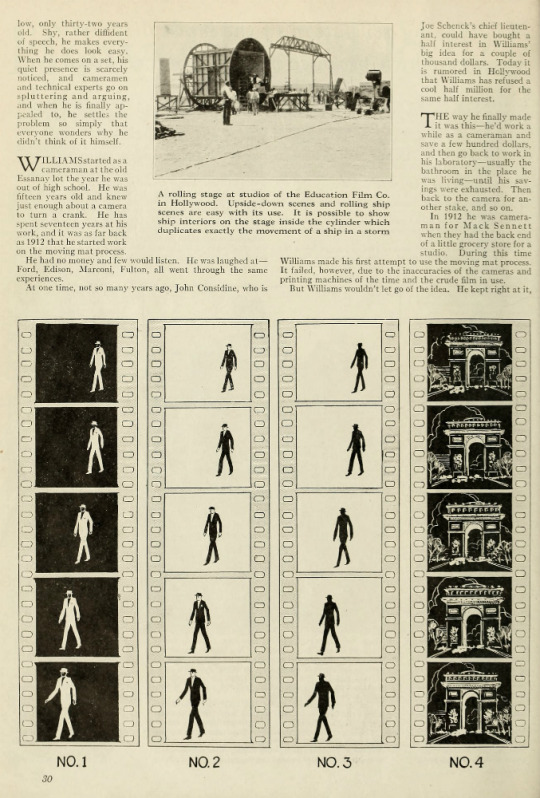
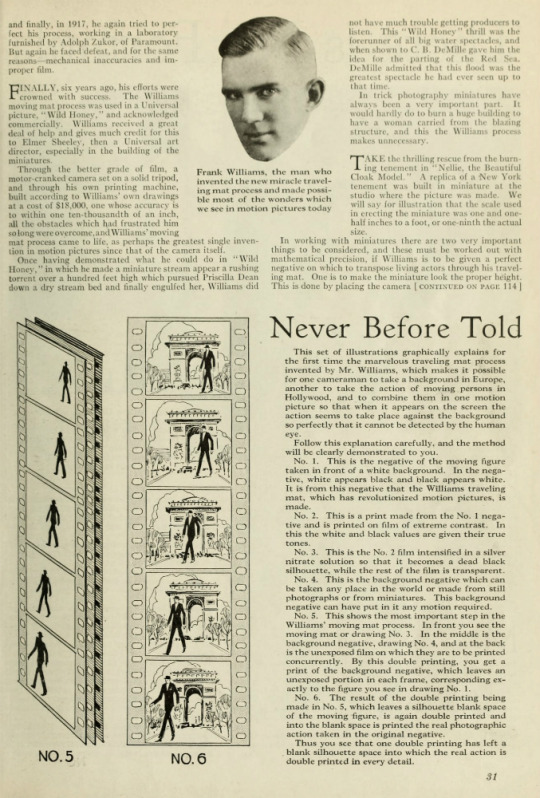
WILLIAMS started as a cameraman at the old Essanay lot the year he was out of high school. He was fifteen years old and knew just enough about a camera to turn a crank. He has spent seventeen years at his work, and it was as far back as 1912 that he started work on the moving mat process.
He had no money and few would listen. He was laughed at—Ford, Edison, Marconi, Fulton, all went through the same experiences.
At one time, not so many years ago, John Considine, who is Joe Schenck's chief lieutenant, could have bought a half interest in Williams' big idea for a couple of thousand dollars. Today it is rumored in Hollywood that Williams has refused a cool half million for the same half interest.
THE way he finally made it was this—he'd work a while as a cameraman and save a few hundred dollars, and then go back to work in his laboratory—usually the bathroom in the place he was living—until his savings were exhausted. Then back to the camera for another stake, and so on.
In 1912 he was cameraman for Mack Sennett when they had the back end of a little grocery store for a studio. During this time Williams made his first attempt to use the moving mat process. It failed, however, due to the inaccuracies of the cameras and printing machines of the time and the crude film in use.
But Williams wouldn’t let go of the idea. He kept right at it, and finally, in 1917, he again tried to perfect his process. working in a laboratory furnished by Adolph Zukor, of Paramount. But again he faced defeat, and for the same reasons—mechanical inaccuracies and improper film.
---
Photo caption: A rolling stage at studios of the Education Film Co. in Hollywood. Upside-down scenes and rolling ship scenes are easy with its use. It is possible to show ship interiors on the stage inside the cylinder which duplicates exactly the movement of a ship in a storm
[The rolling stage was used for lots of imaginative and comedic sequences in shorts and features. In the Lupino Lane short Movieland (1926), there’s a bit that shows the stage in action. Here’s a link to that specific scene, but the whole short is a lot of wacky fun and I recommend watching the full film!
Another illustration of how the rolling stage can be put to use is in When the Clouds Roll By (1919):
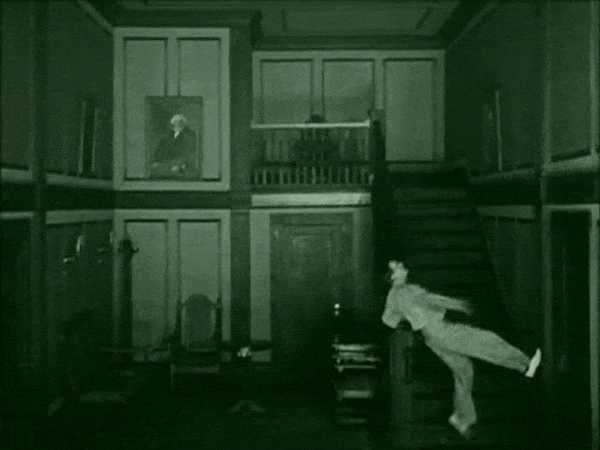

---
FINALLY, six years ago, his efforts were crowned with success. The Williams moving mat process was used in a Universal picture, "Wild Honey," and acknowledged commercially. Williams received a great deal of help and gives much credit for this to Elmer Sheeley, then a Universal art director, especially in the building of the miniatures.
Through the better grade of film, a motor-cranked camera set on a solid tripod, and through his own printing machine, built according to Williams' own drawings at a cost of $18,000, one whose accuracy is to within one ten-thousandth of an inch, all the obstacles which had frustrated him so long were overcome and Williams' moving mat process came to life, as perhaps the greatest single invention in motion pictures since that of the camera itself.
Once having demonstrated what he could do in "Wild Honey," in which he made a miniature stream appear a rushing torrent over a hundred feet high which pursued Priscilla Dean down a dry stream bed and finally engulfed her, Williams did not have much trouble getting producers to listen. This "Wild Honey" thrill was the forerunner of all big water spectacles, and when shown to C.B. DeMille gave him the idea for the parting of the Red Sea. DeMille admitted that this flood was the greatest spectacle he had ever seen up to that time.
[Unfortunately, Wild Honey (1922) is currently presumed lost and I was unable to find any depiction of Priscilla Dean fleeing from a torrent of water. As noted above however, there are quite a few extant films that also used Williams’ moving matte process.
In case you were wondering, I put $18,000 through an inflation calculator and it is equivalent to more than $315,000 in 2023 money!]
In trick photography miniatures have always been a very important part. It would hardly do to burn a huge building to have a woman carried from the blazing structure, and this the Williams process makes unnecessary.
TAKE the thrilling rescue front the burning tenement in "Nellie, the Beautiful Cloak Model." A replica of a New York tenement was built in miniature at the studio where the picture was made. We will say for illustration that the scale used in erecting the miniature was one and one-half inches to a foot, or one-ninth the actual size.
In working with miniatures there are two very important things to be considered, and these must be worked out with mathematical precision, if Williams is to be given a perfect negative on which to transpose living actors through his traveling mat. One is to make the miniature look the proper height. This is done by placing the camera the proper distance from the miniature (of course much closer than if it were a real building), and shooting from a lower level. The other is called timing. For example, if a miniature tree is to fall and the camera set-up is close enough and low enough to give the miniature the proper height when it is seen on the screen, then you must be careful of the speed with which it falls.
A little tree falls rapidly—a big tree slowly. And here is where the timing enters. Ultra speed cameras are used. The faster you crank the more pictures you get per second, and the slower the thing seems to move when you see it on the screen. You have all seen slow-motion pictures. These were made with slow-motion cameras, or what are more commonly termed ultra-speed cameras. And it is through this slow motion photography that the little tree is made to fall at the proper speed to be the big tree it represents, or the miniature stream is made to run at the proper speed for a giant river.
And so to get back to the fire which is still threatening "Our Nell." A torch is applied to the miniature tenement. At the proper count little invisible wires tied to window sashes are pulled and burning brands crash to the street below. And all the time the cameras, driven by motors at the proper speed, placed at the right distance from the conflagration and almost flat on the floor, are grinding away and recording this great fire.
[Nellie, the Beautiful Cloak Model (1924) is extant, with a print located at Gosfilmofond, but the film is not readily accessible. However, a depiction of the burning building sequence appears on an advertisement for the film:

from Film Daily, 28 February 1924]
OVER on some other part of the lot, and at any time which suits the director's convenience, T. Roy Barnes, with Miss Windsor in his arms, dashes through a black velvet door and down a street backed with more black velvet.
Two things must be remembered, however. The actors must come out of the velvet door at the right spot and at the right time or "count." This is necessary so that Williams can match up the fire negative, which is the background with action in it, with the negative of Miss Windsor and Barnes, which becomes the moving mat.
The remainder is simple, and is done by Williams and his printing process over at his laboratory.
On the screen you see Barnes dashing from a burning tenement with Miss Windsor in his arms while, in reality, neither of the actors has been close enough to a fire to singe a single eyelash.
Blanche Sweet's rescue of Colman in "The Supreme Moment" was worked out in the same manner as this, as have been most other burning building thrills in pictures made in the last few years.
[His Supreme Moment (1925) is presumed lost and unfortunately I was unable to locate a depiction of the burning building rescue mentioned here.]
Now for the destruction of Pontius Pilate's palace with the struggling mass crushed beneath, in "Ben Hur." Of course the palace was done in miniature, while the people did their acting out on the lot, where the street was built with a dead white backing. Again the timing had to correspond with that in the falling of the palace.
The throng of people was lined up and rehearsed. Two lines were drawn in the street a fixed distance apart—which represented the space where the ruins of the palace would fall, and the throng was sent dashing wildly down the street. At a fixed signal, all caught between the two marks fell flat on the ground. Those who had not reached the first line halted and registered terror. Those who had passed the second mark fled on, looking back and also registering terror. You see, those caught between the two marks were the people buried under the debris of Pilate's palace—those on either side had escaped.

Then came the trick printing with the two negatives, with considerable painting out of those who had fallen flat between the two lines, and you have the palace falling on the panic-stricken throng in the street. The accompanying drawings will help you to visualize this.
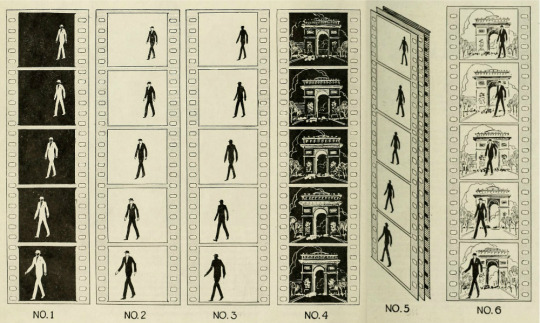
Never Before Told
This set of illustrations graphically explains for the first time the marvelous traveling mat process invented by Mr. Williams, which makes it possible for one cameraman to take a background in Europe, another to take the action of moving persons in Hollywood, and to combine them in one motion picture so that when it appears on the screen the action seems to take place against the background so perfectly that it cannot be detected by the human eye.
Follow this explanation carefully, and the method will be clearly demonstrated to you.
No. 1. This is the negative of the moving figure taken in front of a white background. In the negative, white appears black and black appears white. It is from this negative that the Williams traveling mat, which has revolutionized motion pictures, is made.
No. 2. This is a print made from the No. 1 negative and is printed on film of extreme contrast. In this the white and black values are given their true tones.
No. 3. This is the No. 2 film intensified in a silver nitrate solution so that it becomes a dead black silhouette, while the rest of the film is transparent.
No. 4. This is the background negative which can be taken any place in the world or made from still photographs or from miniatures. This background negative can have put in it any motion required.
No. 5. This shows the most important step in the Williams' moving mat process. In front you see the moving mat or drawing No. 3. In the middle is the background negative, drawing No. 4, and at the back is the unexposed film on which they are to be printed concurrently. By this double printing, you get a print of the background negative, which leaves an unexposed portion in each frame, corresponding exactly to the figure you see in drawing No. 1.
No. 6. The result of the double printing being made in No. 5, which leaves a silhouette blank space of the moving figure, is again double printed and into the blank space is printed the real photographic action taken in the original negative.
Thus you see that one double printing has left a blank silhouette space into which the real action is double printed in every detail.
---
The rescue of Doris Kenyon, which is also illustrated by the artist, was accomplished in this manner. One negative was shot of a very real and very steep precipice, the cameramen suspended on a platform far out over the edge to get the proper angle. Another negative was shot of Miss Kenyon's horse racing madly along what looked like a fence—but what was the inevitable white drop. Doris and the horse had to reach a certain mark at a certain count—for over at the precipice there had been rocks and dirt released at a certain count—the horse bad to rear, and Colman had to reach the frenzied beast, starting from outside the camera line, and he, too, must arrive on the right count. There could be no waiting for man or horse. They took it perhaps forty times before everything was exactly right, and then the two negatives (the precipice background and the moving mat) were ready for the printing wizard, and audiences got a great thrill.
[A Thief in Paradise (1925) is almost entirely lost. I profiled the film in my series Lost, but Not Forgotten in 2023.]
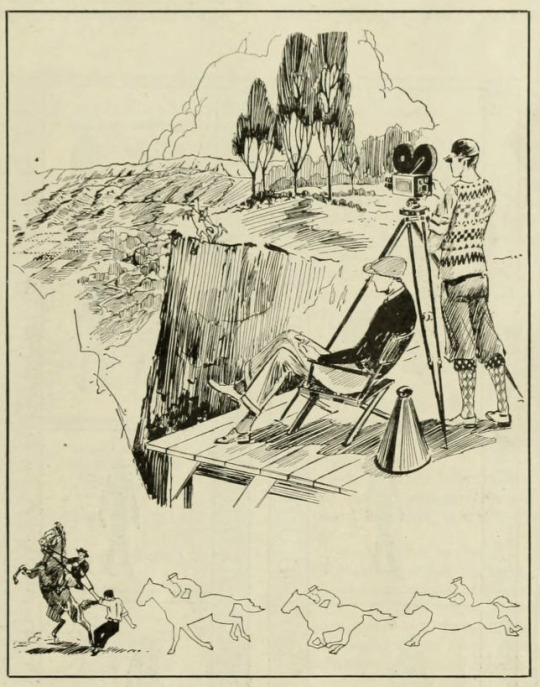
Photo caption: These two drawings explain how the runaway horse thrill in George Fitzmaurice's "A Thief in Paradise" was made. The upper drawing shows the cameraman getting his shots of a very steep and very real precipice. It also has the horse with its rider and the rescuer sketched in on the edge of the precipice where it actually appears in the picture.
The lower drawing shows the run that was made before the dead white background, with the horse rearing and Ronald Colman coming to Doris Kenyon's rescue.
The upper drawing was the background negative and the lower drawing the moving mat negative, and by the Williams' process the rearing horse, rider and Colman seemed to be actually placed on the brink of the precipice
---
You remember the mountain of water pursuing Conway Tearle in "The Great Divide." Of course they shot the torrent in miniature. Conway and his horse made their hairbreadth dash on a dark night and in an artificial rainstorm with nothing but a director threatening —then, although they did have quite a time making the steed climb a slippery and sloping wooden bridge, which was out on the back lot. Then up in Mr. Williams' laboratory, they finished one of the greatest thrills ever witnessed.
[While The Great Divide (1925) is thankfully extant at Cinemateket-Svenska Filminstitutet, it’s not easily accessible and I was unable to find a depiction of the effect.]
And the marvelous battle scenes in "The Big Parade." There were the big guns tearing huge craters in No Man's Land made on one negative, and the boys marched on and on and on in the other negative, and Mr. Williams brought them together in his printing laboratory. However, it was by no means as easy as it sounds, for this was one of the hardest pieces of moving mat printing ever accomplished.

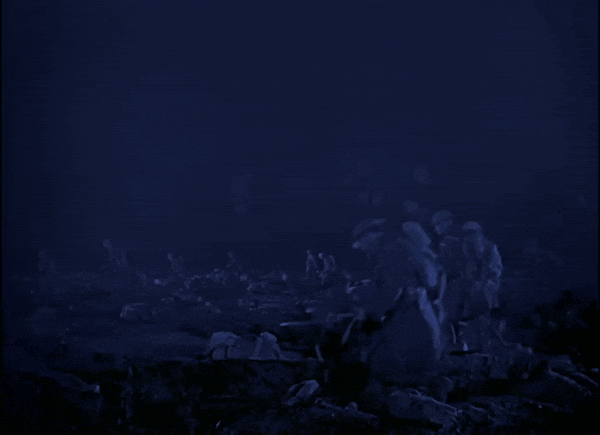

SO critical is the public that the building, photographing and printing of these miniatures must be of the very highest type of workmanship obtainable. It might be interesting to know that this work in "The Big Parade" alone cost approximately $70,000 for the background negative and the moving mat negative. The miniature battlefield was about one hundred thirty-five feet long and more than seven thousand miniature shells were fired in a period of forty seconds.
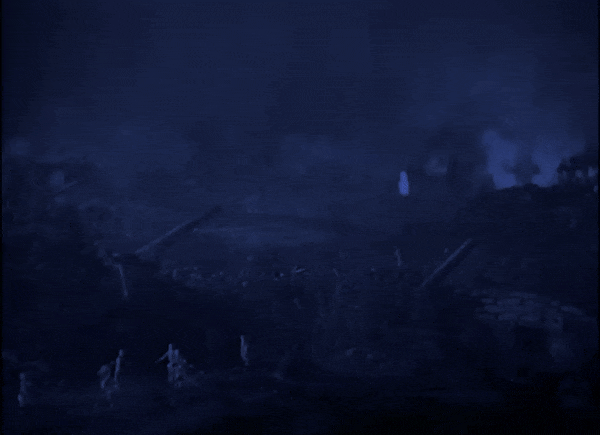



On another picture—"The Barrier"—which shows a fierce storm at sea, icebergs, and a ship caught and crushed in an ice floe, more than $85,000 have been spent to create these illusions.
[The Barrier (1926) is unfortunately presumed lost and I wasn’t able to find a depiction of this effect.]
Mr. Waller, technical camera expert of the Famous Players Long Island Studio, had never seen a cyclone; yet he was instructed to produce one for D. W. Griffith's picture, "That Royle Girl." Mr. Waller did extensive research work on the subject, and then made one to experiment with. A scientific knowledge of the working of the law of gravity, by the way, is necessary to create this phenomenon of nature.
[That Royle Girl (1925) is also presumed lost, and without film footage of this sequence there’s not really a way to know how the cyclone looked in the film. However, I do think the image highlighted in the advertisement below is likely from the cyclone sequence.
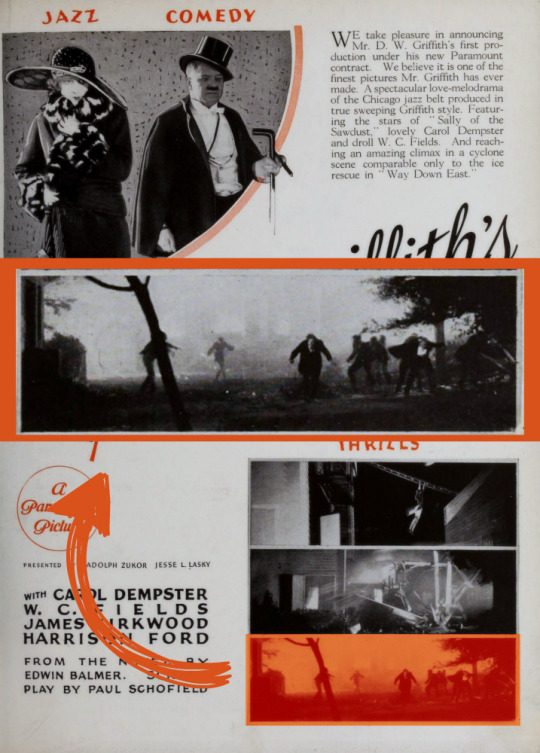
from Motion Picture News, 21 November 1925]
In the basement of the studio Mr. Waller connected up three vacuum cleaners. With three suctions of air and some dust, he made a tiny cyclone. This was photographed in slow motion so that the camera and technical crew might study the formation and activity of the cone.
From his observations of the film, Mr. Waller was able to prepare the series of wash drawings which, photographed in animated cartoon fashion, represented the action of the cyclone's cone in this sequence of the picture.
Several hundred drawings had to be made, each one depicting gradually the advance of the cone toward the Inn, which it finally demolishes. These were photographed in rotation on motion picture negative, and this negative double exposed on the 180-foot miniature scene containing the houses and trees. Thus we got a very good illusion of the cone of a cyclone advancing over a village and sweeping houses and trees out of its path.
[I wonder if/hope that some of these drawings have survived!]
The animated cartoon idea was also used in "A Kiss for Cinderella," when the pumpkin and mice change into the coach and four. The first few feet of the sequence showed real mice and pumpkin; from then on 256 wash drawings of the gradual transformation were photographed in rotation and gave the impression of being animated.
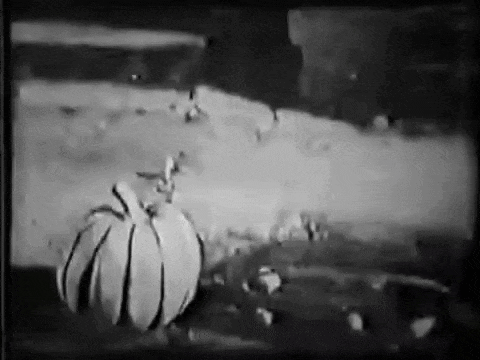
Double exposures of one actor playing two parts is the oldest and most familiar camera trick to the fans.
Just recently, however, has it been perfected to the point where the actor's two screen shadows can light each other's cigarettes and shake hands.
Tom Meighan, you recall, did this in Irish Luck."
AN invisible line from top to bottom divides each frame of the negative in half. One half at a time is exposed, photographing one half of the set.
Tom appears as Lord Fitzhugh on the left half, and as Tom Donohue on the right half. If you remember. Tom's two shadows are sitting side by side on a divan in the instance of the cigarette lighting. Fitzhugh leans over and gets a light from Donahue's cigarette. The illusion is perfect. But the cigarette from which his lordship really got the light was tacked onto a chair just outside the line, on the half of the set not being photographed at that moment. Only the lighted end of the cigarette projects into Fitzhugh's half of the picture.
[Irish Luck (1925) is extant at Eastman House, but it’s not currently easily accessible. I wasn’t able to find a depiction of this split-screen effect.]
Then when Donahue's half of the scene was being filmed, Tom leans forward and holds his cigarette in exactly the spot where the chair had been, the lighted end being outside his half of the picture. Think of the perfect matching this requires!
It is done this way. As Lord Fitzhugh performs on one side of the set, the director times his actions, counting the seconds out loud. He knows just where his lordship's right arm is, for instance, at the sixteenth second. When Donahue begins to perform on the other side of the set, his arm must be in a corresponding position at the sixteenth second. Tricky.
A thrilling moment in "Aloma of the South Seas," Gilda Grey's new picture, occurs when a shark eats a sailor. If you want this thrill, you naturally have to take it synthetic.
The shark cost $3,000. It was made of flexible rubber, and its insides consisted of a maze of electric wiring. Outside the body were several buttons which the actor could operate in his fight with the shark. It swims, wiggles its tail and bites electrically.
[Aloma of the South Seas (1926) is presumed lost and I wasn’t able to find images of the shark described here. However, as consolation, here is a photo from American Cinematographer of the film’s cinematographer Harry Fishbeck shooting on location in Puerto Rico:
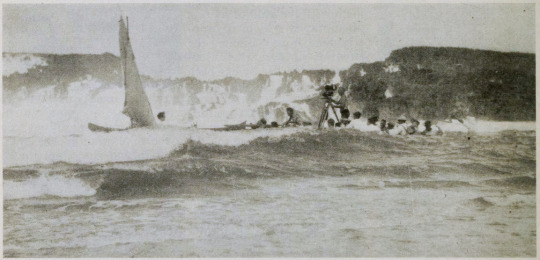
from American Cinematographer, February 1926]
I guess most of the suffering for art is done by the actors who tie themselves into knots to create the illusion of paralysis, amputated legs and so on. John Gilbert is shown in the last reels of "The Big Parade" with an amputated leg. Jack Barrymore in "The Sea Beast," also does it. It is merely a painful process of strapping the foreleg back. In "The Street of Forgotten Men," with Percy Marmont, a very lucid expose of cripple fakes is shown. Marmont had his arm strapped to his back for hours at a stretch during the filming of this picture. It hurts the first fifteen minutes, Percy said. After that the arm becomes numb.
A vigorous massage is necessary to bring it back to life, but it doesn't feel normal for weeks, Percy says.
Lon Chaney has his tricks of deformity down so pat that they are almost painless to him now.
#1920s#1910s#1926#classic film#classic movies#film#american film#my edits#silent film#my gifs#silent movies#silent era#silent cinema#cinema#film history#history#Roy Pomeroy#Frank Williams#Film Art#How'd They Do It#photoplay#lantern
58 notes
·
View notes
Text

Producer and co-founder of what would become Paramount Pictures, Jesse L. Lasky (September 13, 1880 – January 13, 1958)
15 notes
·
View notes
Text


Sid Smith (with Marvel Rea) in Nonsense (1920, Jack White)
Pencil-mustachioed Smith worked for Keystone briefly in 1917, but returned more prominently when teamed with Billy Bevan in Del Lord-directed comedies in 1924 like Lizzies of the Field.
A Fairbault, Minnesota native, Smith started in motion pictures in 1911 with Pathé Western under the direction of James Youngdeer, appearing in films such as Her Son, The Bullet's Mark and The Blind Gypsy. He joined Selig around 1913, appearing in Castles in the Air, the three-reeler Garrison's Finish, Her Victory Internal and Tale of a Coat. Smith played Mickey in "The Red Head" series and appeared in their "Chronicles of Bloom Center" series in 1915.
He married Ruth Beckman on Mar 17, 1915, and they divorced in Apr 1921.
Smith's first starring series came with Alkire Photoplays, and in 1920 he made 26 Holly Comedies for Bulls Eye, featuring Paul Parrott and under the direction of Robert Kerr. Smith supported Monty Banks in his Warner comedies, and in 1921-22 he appeared opposite a succession of other comedians in the successful "Hallroom Boys" series for CBC/Federated. Smith made some shorts for Grand Asher in 1923 and starred in Jack White's Cameo Comedies in 1923-24, before his work at Sennett. Smith had appeared as "Ramon Alfaro" in the feature The Ne'er Do Well(Selig) in 1916, and repeated his role in the 1923 Famous Players-Lasky version. He also appeared in Kismet(Waldorf 1920), and starred in many shorts for Al Christie during the 1920s, for Paramount and Pizor in 1927 and for Goodart in 1928. In 1928, Smith was featured in two World War 1 spoof features for Anchor, Dugan of the Dugouts and Top Sergeant Mulligan.
Smith's death in at 36, was attributed to his having imbibed bad liquor at a Malibu beach party. He left his father J.L. Smith of Fairbault, Minnesota, and brother J.C. Smith of Des Moines, Iowa, and is interred at Hollywood Forever Cemetery.
-Walker, B.E., 2010, Mack Sennett's Fun Factory, McFarland&Company, Inc., Publishers, p.543








The director Jack White(center)'s childhood days in Fatty Joins the Force (1913)
A neighborhood kid from Edendale, White appeared in a couple of 1913-14 Keystones (such as the boy who gives Fatty Arbuckle a pie in the face in Fatty Joins the Force). White also briefly worked the Sennett switchboard, but was fired for putting a call through to Ford Sterling that lured the star comedian to another lot. White wound up producing comedies for Educational in the 1920s that competed with Sennett's.
-Walker, B.E., 2010, Mack Sennett's Fun Factory, McFarland&Company, Inc., Publishers, p.597
#nonsense 1920#produced by#jack white#jack white comedies#sid smith#marvel rea#fatty joins the force 1913#책 인용
3 notes
·
View notes
Text
Top Directors Of World Cinema
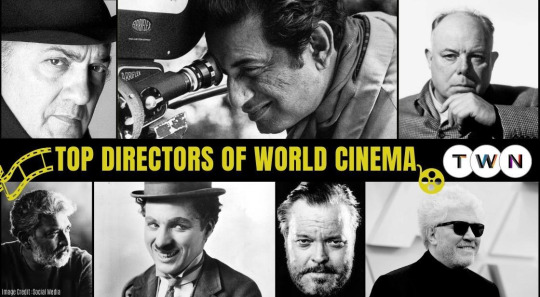
Over the past century, some of the greatest directors ever have produced some of the best movies we've ever seen. We are really moved by these films. That addresses humanity, love, grief, and friendship in fresh and intriguing ways.
World cinema refers to the global film industry that includes both mainstream and independent films produced in different countries and languages. Over the years, numerous filmmakers, actors, and other creative professionals have made significant contributions to the world of cinema. In this article, we will discuss some of the top leaders of world cinema.
Top Directors Of World Cinema
1. Alfred Hitchcock: The Master of Suspense
Alfred Hitchcock is widely regarded as one of the greatest and most influential filmmakers in the history of cinema. He was known for his mastery of suspense and his ability to create tension and drama in his films. Hitchcock directed classic films such as Psycho, Rear Window, Vertigo, and North by Northwest. His innovative techniques and storytelling style have influenced generations of filmmakers around the world.
Early Life and Education
Alfred Hitchcock was born on August 13, 1899, in Leytonstone, London, UK. He was the youngest of three children of William Hitchcock, a greengrocer, and Emma Jane Hitchcock. Hitchcock attended St. Ignatius College in London, where he developed an interest in literature and art.
Career in Film Industry
Hitchcock started his career in the film industry in 1920, working as a title designer for the London branch of Famous Players-Lasky. In 1922, he moved to Germany to work for the UFA studio, where he learned the art of filmmaking. He directed his first film, "The Pleasure Garden," in 1925.
To Read This Full ARTICLE, Click Here
0 notes
Photo
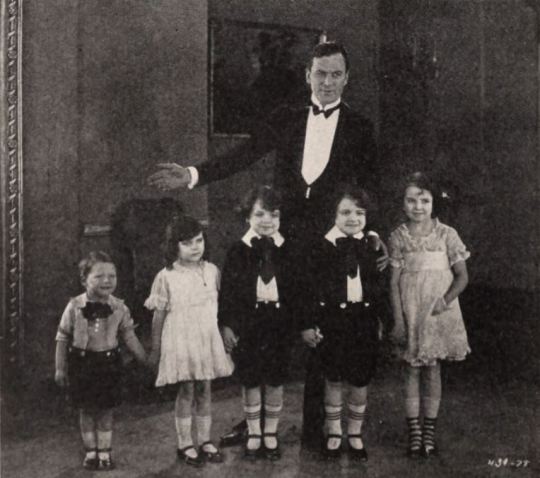
HAPPY FATHER’S DAY from the Spiritualist Church of Revelation
JUNE ITINERARY
SCHEDULED SPEAKERS
June 4th: Karen Glenn
June 11th: Michael Zavala
June 18th: Rev. Sylvia Williams
June 25th: Michael Zavala
Church services begin with out healing service at 11am, followed by our sermon, then announcements, and spirit greetings from our platform mediums. All are invited to attend!
Famous Players-Lasky Corporation / Paramount Pictures, Public domain, via Wikimedia Commons
#spiritual awareness#spiritualists#spiritualist church#spiritualism#Modern Spiritualism#spiritualist church monrovia#Monrovia#monrovia california#clairvoyants#clairaudience#clairvoyance readings#mediumship classes#classes#spiritual healing#Spiritual Development
1 note
·
View note